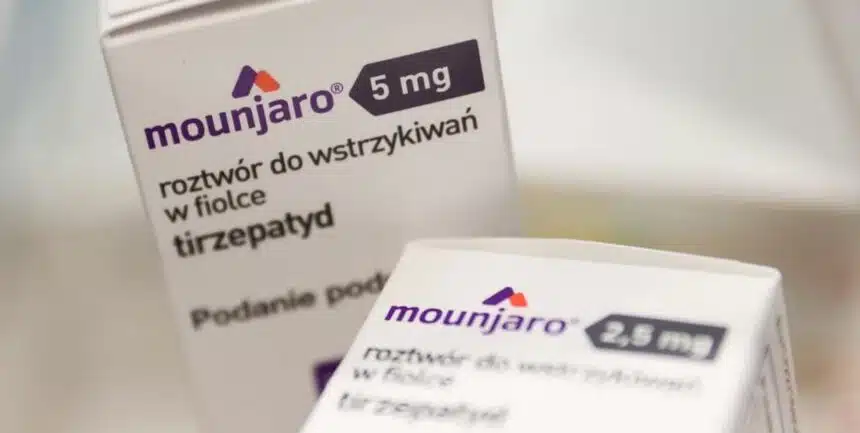Eli Lilly stunned both patients and pundits by announcing a hefty price increase for its weight-loss wonder, Mounjaro, in the United Kingdom.
Starting this September, the cost for a month’s supply of the highest dose will soar from £122 to £330—a staggering 170% leap. Beneath these eye-watering numbers, however, lies a strategic maneuver aimed at softening the blow for American buyers.
It sounds counterintuitive at first. Why saddle British customers with steep hikes so that Americans can breathe easier at the pharmacy counter? Yet, under intense pressure from the Trump administration to level U.S. drug prices with Europe’s, Lilly has effectively chosen to rebalance its global pricing scales—shifting more of the innovation cost onto developed markets outside the States.
A Calculated UK Premium
When Mounjaro first launched in Britain, Lilly quietly agreed to a list price well below the European average. The rationale? Speed up NHS availability and sidestep bureaucratic delays that often plague novel therapies.
Roughly 220,000 Brits—many grappling with type 2 diabetes—are expected to access Mounjaro through the NHS in its first three years. That price for NHS-covered patients stays locked in; it’s private suppliers and self-payers who will feel the pinch.
Interestingly, Lilly isn’t entirely blind to the sticker shock. Private clinics can still haggle for discounts, and some providers like Juniper have already nudged clients toward alternatives such as Novo Nordisk’s Wegovy. It’s a reminder that pharma pricing isn’t monolithic; it’s a complex dance of negotiations, national health policies, and patient advocacy.
Politics on the Prescription Pad
Donald Trump has never been shy about wielding the presidential pen when it comes to drug prices. In May, he invoked a “Most Favored Nation” rule, eyeing parity between U.S. and European costs. Months later, letters demanding lower American prices landed on the desks of 17 big pharma CEOs. Trump’s grip? Legally murky at best, but undeniably forceful in practice.
Sure, the president may lack clear authority to dictate global pricing, and experts caution that raising costs abroad could slow drug access elsewhere. But there’s real muscle in his message: if you want to keep innovating here, you’d better make it more affordable for U.S. patients.
I can almost hear the boardroom debates—executives wrestling with moral, financial, and reputational stakes. Do we hike prices overseas, risking public ire, so we don’t bleed out in the States? It’s a devil’s bargain, but it’s the one Lilly decided to strike.
What This Means for Patients
Let’s be honest: shaking down British payers stings. Some patients will delay treatment or hunt down cheaper options abroad. Yet, if U.S. costs drop—say, from $1,300 to something closer to the UK’s old £122 price—millions of Americans who’ve watched these meds languish behind onerous copays might finally gain access.
Still, there’s no guarantee the savings will trickle all the way to your local pharmacy. Middlemen, insurers, and state laws will all play their part. A lower list price doesn’t automatically equate to a lower out-of-pocket expense. So, while the strategy might look clever on paper, real-world impact could be… well, complicated.
Global Fairness or Financial Shuffling?
Some will hail Lilly’s move as a triumph of free-market flexibility—redistributing costs so that no single country feels the full burden of drug development. Others will lament it as an exploitative practice, punishing one population to pamper another. And honestly? Both sides have a point.
I find myself torn. On one hand, we need sustainable funding for breakthroughs in obesity, diabetes, and beyond. On the other, making life-saving drugs suddenly unaffordable in one market feels ethically dicey.
Looking Ahead
Will we see more pharma giants playing this transatlantic pricing seesaw? Probably. As long as U.S. prices remain outliers, companies will keep seeking creative accounting to appease politicians and investors alike. The real question is whether this tactic actually drives down U.S. costs in the long run—or merely creates fresh tensions overseas.
Time will tell if British patients end up footing the bill for American bargains. Meanwhile, in the States, consumers will be watching carefully, hopeful that their next Mounjaro refill won’t prompt an existential crisis at checkout.
What do you think? Have you felt the shock of a rising prescription bill, or discovered clever workarounds to keep treatment affordable?
Drop a comment below and share your story. And don’t forget to follow us on Facebook and Instagram for more straight-talk on weight-loss news and tips.
Are Ozempic and GLP-1 the answer for weight loss? Find out now.
Sources:
- www.edition.cnn.com/2025/08/15/business/eli-lilly-mounjaro-price-rises-uk
- www.independent.co.uk/bulletin/news/mounjaro-price-increase-private-prescription-b2808281.html
- www.news.sky.com/story/mounjaro-manufacturer-to-hike-uk-price-of-weight-loss-drug-by-up-to-170-13411815

Say Hi to SelfWeightLoss’s Guest Authors! Many talented authors have submitted their article and contributed to get it bigger. Browse through this page. You may find the right author for you. If you think you would like to contribute to the blog, Please visit this page: https://selfweightloss.com/write-for-us and follow its guidance. Thank you!










